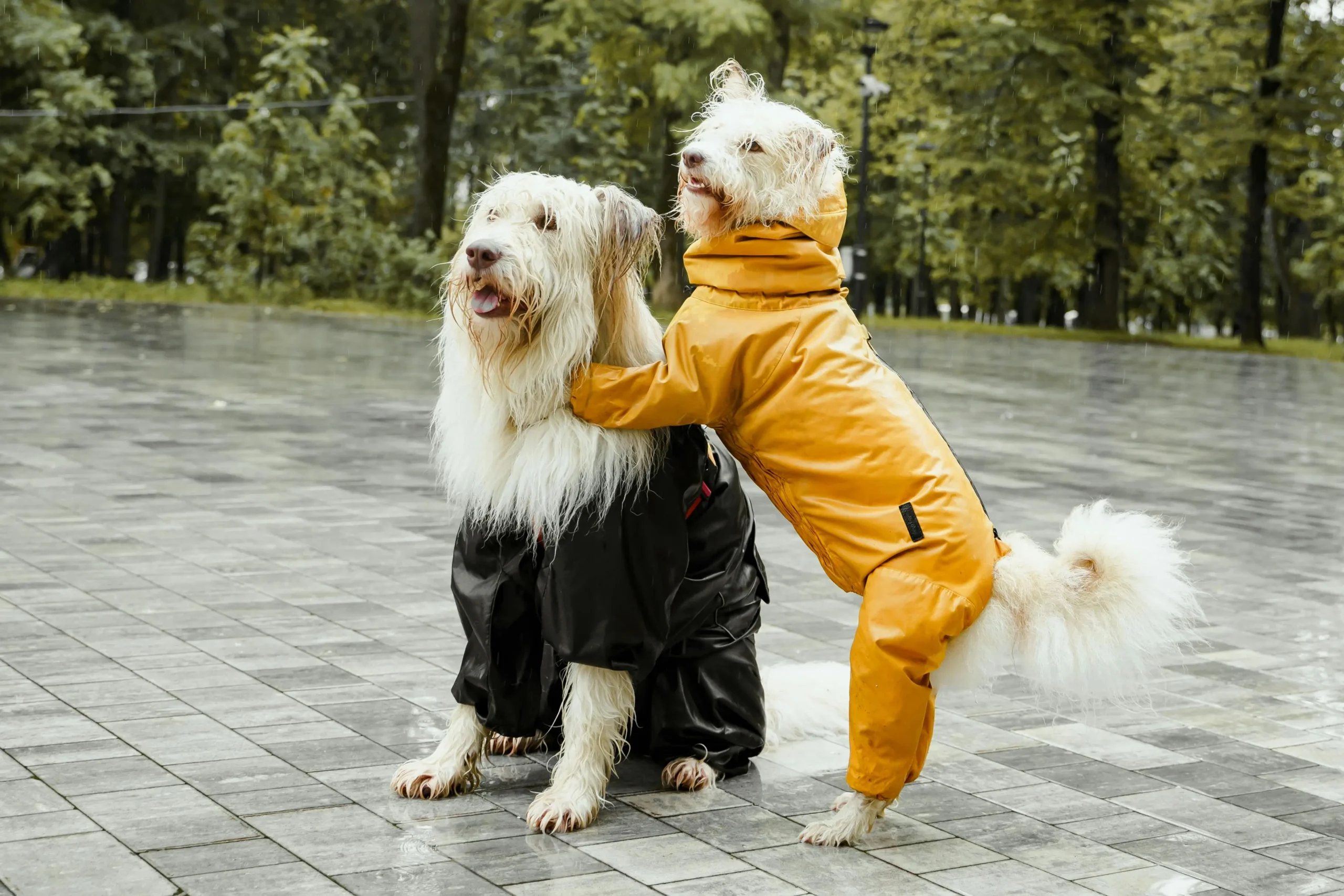
From Allergies to Skin Conditions: Can Dog Clothing Help Protect Sensitive Skin?
Watching a pet scrape at their skin all the time is heartbreaking. Allergies can start small but quickly lead to hair loss, infections, and considerable discomfort if not caught early. Medications and vet visits are a part of the care routine, but could clothing your pup actually also bring comfort and relief?
Dog clothing is often seen as a fashion choice, but for sensitive skin, it can be more practical than stylish. Let’s talk about how clothing can genuinely support dogs with allergies or skin conditions and how you can use it safely, starting with…
1. Why Dogs with Sensitive Skin Need an Extra Layer of Care?
It doesn’t take much: a speck of pollen or a single flea bite can start a flare in your pup’s sensitive skin. Licking and rubbing then makes the area more irritated. Clothing can be a gentle buffer.
Covering their body with the right fabric keeps allergens off their skin and reduces irritation. The extra layer is also great for protecting already broken or inflamed skin while it heals.

Dog ears are also pretty sensitive. Cold wind or strong sunlight can cause cracks, scabs, or recurring irritation. Lightweight beanies designed for dogs are one option. They keep the ears warm and shielded, especially in breeds with upright or thin ears.
2. How Clothing Helps Puppies From The Start?
Skin protection isn’t only for adult dogs. Puppies that nose around new textures and surfaces can pick up contact sensitivities sooner than you’d think. Their skin is still thin and tender, so tiny scrapes or a quick rash can show up fast. This is where puppy clothes can be more than a cute addition.
A soft cotton layer shields the skin during play and discourages chewing at new itchy spots caused by early allergies. For nervous pups, wearing a snug but gentle shirt can even provide calming pressure that makes them feel more secure. As they grow, these clothes will continue to be useful for seasonal changes and post-vet recovery.
3. Why Clothing Stops Scratching And Helps With Medical Conditions?
When a dog fixates on a sore spot, the constant scratching or gnawing often causes infection. Cones are useful, but many dogs find them stressful. A fitted shirt or body suit can sometimes be a kinder alternative. It prevents direct access to the problem area while still allowing freedom to eat, drink, and sleep without a plastic shield around their head.

Dogs healing from surgery often need consistent protection, too. Instead of constantly fighting to stop them from reaching wounds, recovery suits allow healing without added stress. Covering stitches or inflamed areas reduces infection risk and removes the temptation to lick.
For dogs with chronic conditions such as dermatitis, a soft recovery suit can help. It protects the spots that flare up and keeps ointments from being licked or rubbed off, so creams stay where they should. It won’t cure the condition, but used with your vet’s plan, dog clothes can become a useful part of treatment.
4. How Seasonal Dog Clothes Ease Irritation?
Weather changes affect sensitive skin just as much as allergens. Hot pavement, dry cold air, humid days—they all stress your dog differently. In summer, their bare paws burn on sidewalks, and snow can crack their pads. UV exposure also affects white or light-coated dogs more.
Seasonal clothing provides practical protection. A lightweight t-shirt helps block pollen in spring. A snug jacket keeps your thin-coated dog warm on chilly days — it helps stop heat from slipping away around the chest and belly. A waterproof raincoat sheds the water after a downpour, so wet fur doesn’t sit against the skin and cause chills or irritation.
Even a thin fabric layer can save sensitive bellies from rashes caused by grass in summer fields. It’s all about having the right defense for the right season.
For paws, protection can also make a difference. Boots for dogs can prevent constant licking of the feet caused by allergies to grass or salt in winter. They also stop pads from getting dry or cracked after long hikes, which could also be another source of irritation.
5. Tips For Making Dog Clothing Safe and Comfortable
Clothing should support your pup’s comfort, never cause problems. Here are a few things to watch for:
- Go for breathable materials such as cotton or bamboo. Some lightweight synthetics can work, but do a quick wear-test for a few minutes. Certain synthetic finishes sometimes irritate sensitive skin.
- Check the fit. Aim for a two-finger gap under the fabric, especially for dog onesies. Make sure your pup can stand, sit, and walk naturally; any rubbing or pinching means adjust or size up.
- Give the skin breaks. Remove their outfits daily and inspect the skin for redness, dampness, or small rubs.
- Wash regularly. Cloth becomes a magnet for allergens otherwise. Use a mild, scent-free detergent; don’t use fabric softener — lingering scents often worsen irritation.
- Consult your vet. Dog outfits are just one part of care; for some dogs, medication, diet changes, or allergy testing may be just as important.
Summary
Clothing can simplify care for dogs with sensitive skin when it’s chosen carefully and used with veterinary guidance. A well-fitted suit or shirt creates a barrier against allergens, limits self-trauma from scratching, and shields fragile areas from weather stress — all of which gives topical treatments time to work. The result: fewer flare-ups and more comfortable nights.
